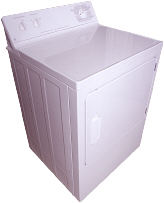Description
IRS Tax Audit Manual for the Garment Contractors Industry
Think You Have An IRS Tax Audit “All Sewn Up”?

The Internal Revenue Service has created a training manual specifically for their auditors to use when examining a Garment Contractor.
What does the IRS tell its auditor’s about the Garment Industry and its operations?
They are very well trained about your industry. Here’s a little peek at Chapter 2…
“The garment industry is a complex and related array of businesses and organizations all directed toward the goal of producing garments which will satisfy the current fashion needs of consumers. Within the industry, there are various levels through which raw materials are transformed into fabric.
The first level, and the one with which most people are familiar, is the retail store. The second level is the manufacturing level which designs the garment, secures fabric and materials, coordinates all aspects of the construction of the garment, and sells the finished garment to retailers. Some manufacturers cut, sew and perform all operations needed to assemble a particular garment. However, major phases of the manufacturing process are normally “contracted out.”
Along this same level lies the manufacturers and converters of fabric. These entities convert raw materials into the fabrics which are used by the garment manufacturers. The third level is where a garment is normally constructed and assembled. These entities, which are responsible for the construction, are known as contractors and sub-contractors and are the focus of the IRS audit procedures and techniques.
Contractors can be classified by the function they perform in the assembly of the product. These functions can be classified into several primary areas: cutting, sewing, and specialized services. These contractors are supervised by the manufacturer, in the sense that the latter provides most materials, sets the specifications to be followed, and inspects work in process and finished garments to ensure the process was completed properly.”
The IRS Tax Audit Manual for Garment Contractors not only educates auditors about the garment industry, the IRS teaches the auditors to focus on problem areas in the Garment Contracting industry such as:
- Inventory Write-Downs
- Costing Errors
- Improper Purchase
- Accruals
- Unallowable Reserves For Sales
- Discounts Returns Allowances
- …and much, much more!
Could you be a target? Learn How The IRS Identifies Which Garment Contractors To Audit…
The process of identifying high potential contractor returns began with an expanded “package audit” during the examination of a garment manufacturer. In other words, as a manufacturer was audited, the examiner reviewed certain documents …
- Cancelled checks
- Invoices
- 1099’s
…that pertained to contractors who performed services for the manufacturer.
These documents highlighted one or more contractors who were likely to have understated their income by significant amounts. By reviewing the cancelled checks, the examiner had firm indications whether or not specific contractors were negotiating them in unusual ways which, by itself, was a “red flag”.
Would you like to have INSTANT and UNLIMITED ACCESS to this Incredible tax audit manual? Download your copy now!
TABLE OF CONTENTS
- Chapter 1
- Selection of Contractors for Audit Background
- Step #1: Reduce the Total Number of Contractors Under Consideration 1-1
- Step #2: Identify Disbursements to the Selected Contractors 1-1
- Step #3: Inspect Canceled Checks 1-2
- Step #4: Select Contractor for Audit 1-2
- Step #5: Secure Documents for Contractor File 1-2
- Step #6: Securing the Contractor Return 1-3
- Summary 1-5
- Chapter 2
- General Background
- Industry Operations 2-1
- Contractor Services 2-1
- Cutting 2-2
- Sewing 2-2
- Other Specialized Contractors 2-2
- Summary 2-3
- Chapter 3
- Contractor’s Relationship with Manufacturers
- Background 3-1
- Obtaining Work from Manufacturers 3-1
- Exclusivity of Working Relationships 3-1
- Price Determination 3-2
- Written Contracts 3-2
- Transportation of Goods 3-2
- Payment Policy of Manufacturers to
- Contractors 3-3
- Invoices Issued by Contractors 3-3
- Chapter 4
- Accounting Records
- General Information 4-1
- Chapter 5
- Employees
- Introduction 5-1
- Types of Employees 5-1
- Compensation Determination 5-2
- Compensation Methods 5-2
- Work Done Off the Premises 5-3
- Chapter 6
- Accumulation of Information Before
- Starting the Audit
- Introduction 6-1
- Canceled Checks Secured from Manufacturers 6-2
- Documents from the Division of
- Labor Standards Enforcement,
- Department of Industrial Relations 6-2
- Registration and the Registration Application 6-3
- Citations and Penalties 6-3
- Commercial Directories and Advertising 6-3
- Work Applications Secured From Manufacturers 6-4
- IRS Records of Form 1099 6-4
- Chapter 7
- Interview
- Importance of the Interview 7-1
- Who to Interview 7-1
- A Review of Basic Techniques 7-2
- Garment Contractor Interview Guidelines and
- Suggested Questions 7-2
- Touring the Premises 7-5
- Chapter 8
- Examining Income
- Income Reporting Methods 8-1
- Bank Deposits 8-1
- Forms 1099 Received From Manufacturers 8-1
- Cash Receipts 8-1
- Lack of Internal Control 8-1
- Audit Techniques 8-2
- Taxpayer Explanations of Unreported Income 8-7
- Chapter 9
- Examining Expenses
- Accounting Records 9-1
- Audit Techniques/Observations 9-1
- Chapter 10
- Employment Taxes
- Issues Generally Encountered 10-1
- Cash Wages Deducted on the Return 10-2
- Cash Wages Claimed During the Examination 10-2
- Records of Compensation Paid 10-2
- Credibility of Documentation Presented 10-3
- Employees or Independent Contractors 10-4
- Homeworkers 10-5
- Consideration of Relief Provisions 10-6
- Section 530 of Internal Revenue Act of 1978 10-7
- Subcontracted Work 10-8
- Back-up Withholding (IRC section 3406) 10-8
- Abatement Considerations 10-8
- Trust Fund Recovery (100 Percent)
- Penalty Statute 10-9
- Chapter 11
- Penalties
- Background 11-1
- Accuracy-Related Penalty:
- IRC section 6662(a) 11-1
- Negligence or Disregard of the
- Rules or Regulations 11-1
- Substantial Understatement 11-1
- Reasonable Cause 11-1
- Fraud Penalty: IRC section 6663 11-2
- Information Reporting Penalties:
- IRC sections 6721-6724 11-2
- Statute of Limitations 11-2
- Criminal Referrals 11-2
- Chapter 12
- Collection and Whipsaw Issue Considerations
- Background 12-1
- Summary 12-1
- Glossary G-1
Don’t forget – The IRS Tax Audit Manual for the Garment Contractor’s Industry is tax deductible as a business expense!




